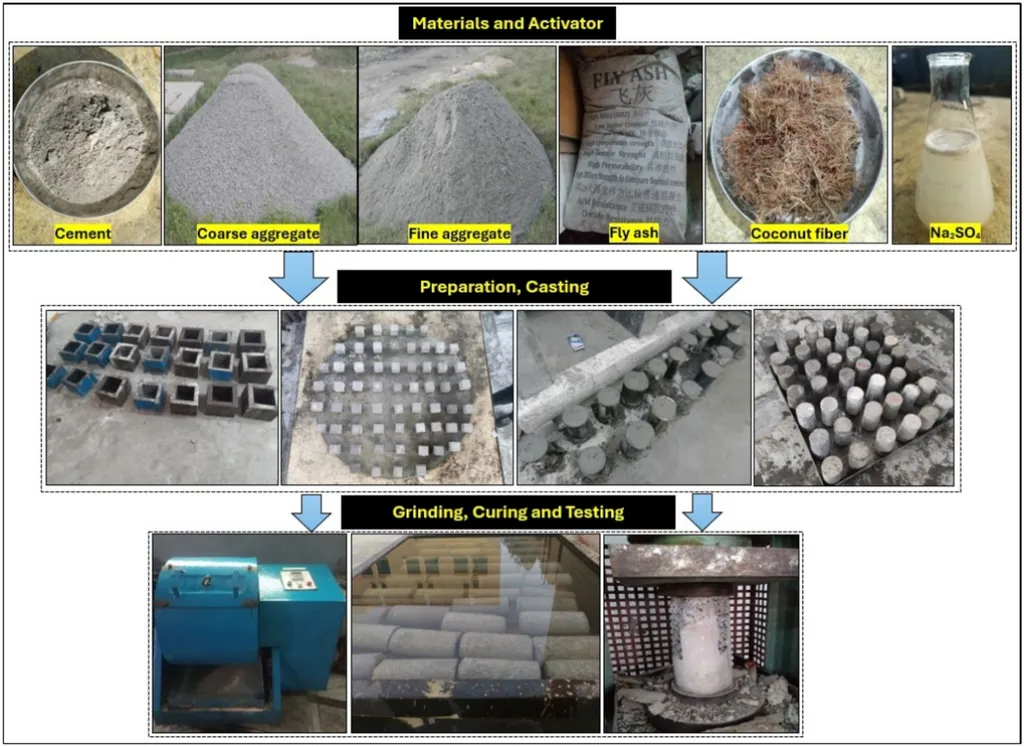In the quest for sustainable construction practices, a recent study published in the journal *Disaster in Civil Engineering and Architecture* (translated from Bengali as “Disaster in Civil Engineering and Architecture”) has shed light on a critical balance between performance and economics in concrete production. Led by Abdul Awol Rabby from the Department of Civil Engineering at Dhaka International University, the research explores the viability of recycled coarse aggregate (RCA) as a partial replacement for natural coarse aggregate (NCA) in concrete mixes.
The study comes at a time when the construction industry is grappling with the depletion of natural resources and the mounting pressure to reduce waste. “The rising volume of construction and demolition waste is a global concern,” Rabby explains. “Finding sustainable alternatives is not just an environmental imperative but also an economic one.”
Rabby and his team designed concrete mixes with varying levels of RCA replacement—0%, 50%, 70%, and 100%—to evaluate the impact on compressive strength and cost. The results revealed a significant trade-off between strength and cost. While the control mix (100% NCA) achieved a compressive strength of 26.5 MPa at 28 days, the 50% RCA mix showed only a 3.92% reduction in strength (25.5 MPa) with an 18.4% lower cost. This finding is particularly noteworthy as it highlights the potential for substantial cost savings without compromising structural integrity.
However, the benefits of RCA are not without limits. At 70% RCA replacement, compressive strength dropped by 10.42% (24 MPa) with a 28.29% cost reduction. The 100% RCA mix, while offering the maximum cost savings (49.07%), resulted in a severe 59.63% strength loss (16.5 MPa). “The key takeaway is that a 50% RCA replacement offers the most rational compromise,” Rabby notes. “It provides structural adequacy with substantial cost efficiency, making it a viable option for sustainable construction.”
The implications of this research are far-reaching, particularly for the energy sector, where cost-effective and sustainable construction practices are increasingly prioritized. As the industry moves towards greener alternatives, the use of RCA in concrete production could play a pivotal role in reducing environmental impact while maintaining economic viability.
“This study reinforces the importance of sustainable practices in the construction industry,” Rabby concludes. “By optimizing the use of recycled materials, we can achieve a balance between performance and cost, paving the way for a more sustainable future.”
As the construction industry continues to evolve, the findings from this research could shape future developments in the field, encouraging a shift towards more sustainable and cost-effective practices. The study, published in *Disaster in Civil Engineering and Architecture*, serves as a crucial step in this direction, offering valuable insights for professionals and researchers alike.

